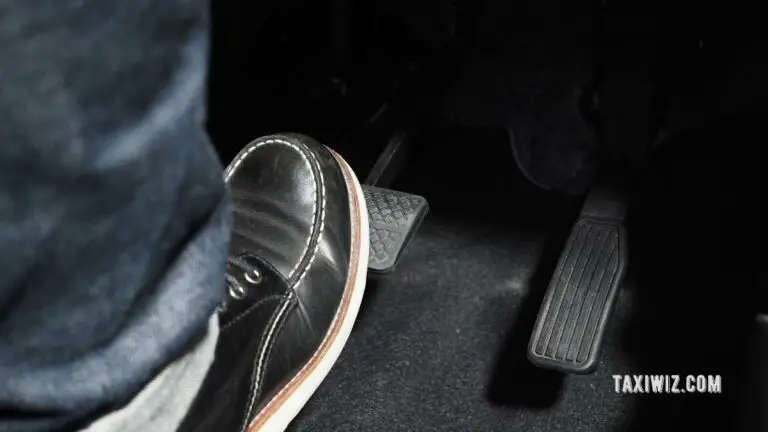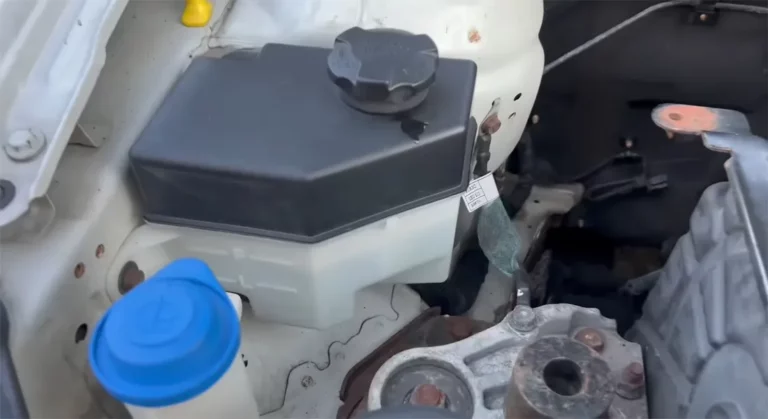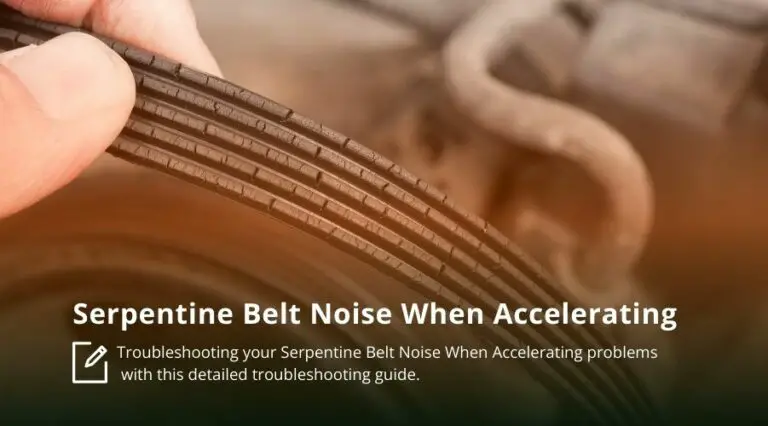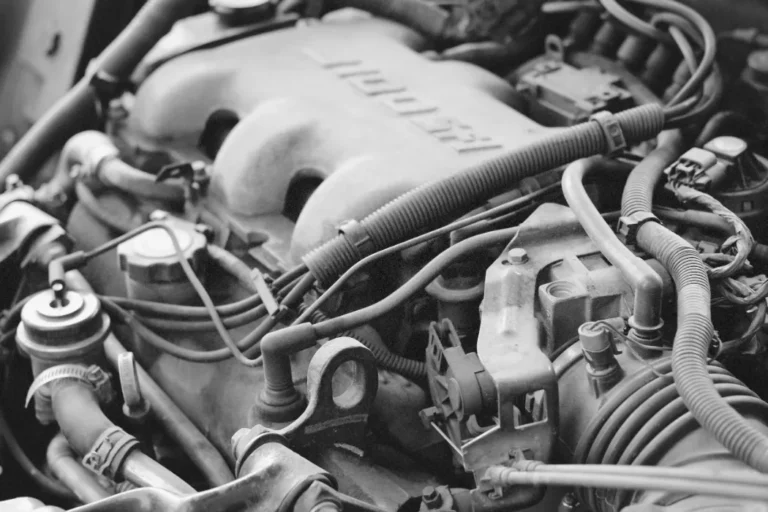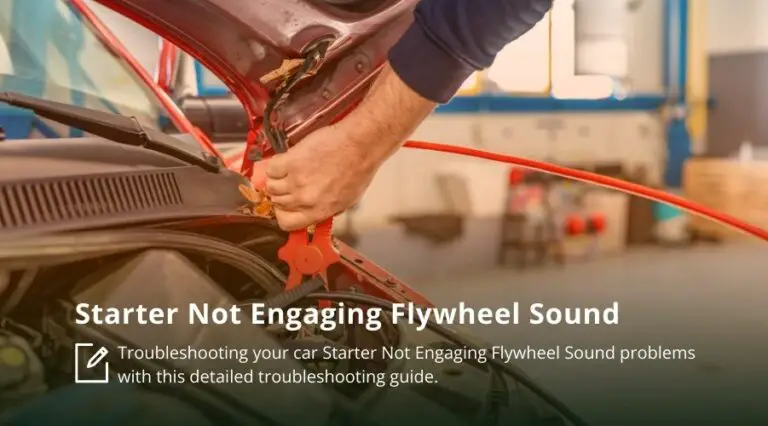Fan Belt Noise When Accelerating – Reasons & What To Do?
Are you sensing an uncomfortable screeching sound coming from your car’s hood? It may be the fan belt if you’ve lately been aware of any noise coming from the engine compartment while you accelerate.
The alternator, power steering pump, and air conditioning compressor are all driven by the fan belt. The fan belt may get damaged over time due to wear and tear. As a result, there may be scratching noises when you accelerate.
The frequently asked issues regarding the fan belt noise when accelerating will be addressed in this extensive article. Learn more about the problem and the solutions by reading on.
What Role Does the Fan Belt Play in My Car’s Operation?
The fan belt is also known as the serpentine belt or drive belt. The belt is essential to the overall performance of an automobile.
It serves as a connection between the crankshaft pulley of the engine and numerous parts. These parts’ correct operation depends on the fan belt’s rotation. The belt moves rotational energy to power critical systems.
The fan belt drives the alternator, air conditioner compressor, power steering pump, and water pump. In general, the fan belt makes sure that these parts get the mechanical power they require to function effectively.
The performance and operation of these systems might be jeopardized in the absence of a properly working fan belt. The owner of the car may have problems and inconveniences as a result.
What is the Location of the Fan Belt and How to Access It?
Depending on the car’s model, the fan belt’s precise placement may change. It is often found next to the radiator at the front of the engine in cars. From the top of the engine compartment, the fan belt is conveniently accessible.
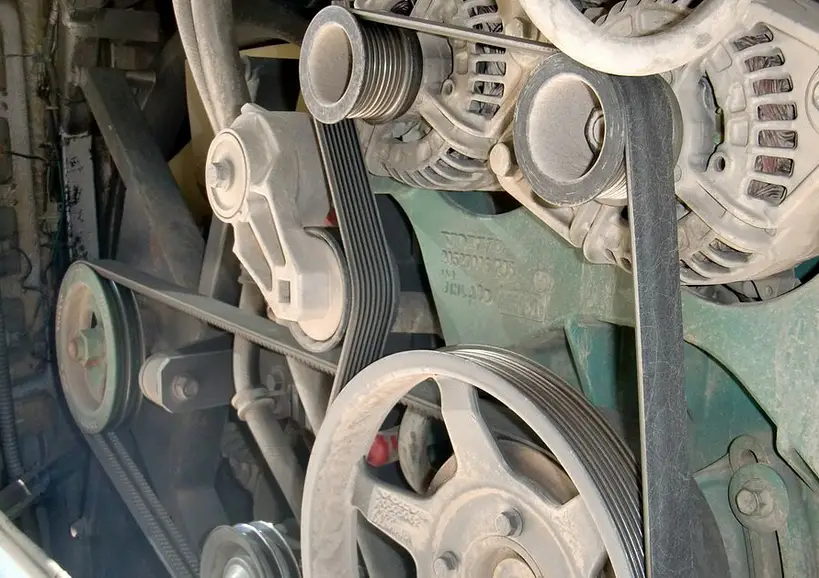
Figure – Fan Belt inside the Engine (Source)
Follow these general procedures to reach the fan belt:
- First, locate the hood latch which is normally found inside the car under the dashboard or next to the footwell on the driver’s side.
- Release the hood latch.
- Using the hood prop rod or support, raise the hood and fasten it.
- At the front of the engine, look for the broad rubber belt that is wrapped around several pulleys.
- Locate the belt tensioner with a square hole or socket that a wrench may go into that is close to the belt.
- Put a wrench or a belt tensioner tool into the tensioner’s square hole or socket.
- Apply pressure in the direction that will release the belt’s tension.
- Release the tension and carefully remove each pulley’s belt off one at a time.
Reasons and Fixes of the Fan Belt Noise When Accelerating
Many factors may be at play when a fan belt generates noise, particularly while accelerating. These are the main reasons:
1. Belt Slippage
When the engine’s RPM rises during acceleration, the fan belt may slide on the pulleys if it is loose or worn out. When the belt loses enough grip on the pulleys, slippage occurs.
A high-pitched screeching sound is the effect of this phenomenon. Acceleration causes the load and rotational speed to rise, which makes the slippage worse. The noise becomes more audible as a result.
Fix
The belt might need to be tightened if it is too loose. To correctly set the tension, consult the user manual of your car.
If the belt is severely worn out or torn, a new one should be installed. Purchase a replacement belt that complies with the recommendations made by the car’s manufacturer.
2. Misaligned Belt
An improperly tensioned or misaligned fan belt may make noise while the vehicle accelerates. When the belt is not parallel to the pulleys, misalignment takes place.
It rubs against the sides or edges as a result of this. This friction produces a sound that is frequently called a squeak.
Similar to this, a belt that is too loosely tensioned cannot offer enough traction. Under acceleration, poor grip causes slipping and noise.
Fix
Make sure all of the pulleys are positioned correctly. Realign the pulleys if misalignment is found to make sure the belt is parallel to them.
If the belt’s tension is off, make the necessary adjustments. Different belts may need different tensions.
3. Dirt and Glazing
The presence of oil and dirt on the surface of the belt or the pulleys might affect how firmly the belt grips the object. Acceleration noise is the outcome of this issue.
The friction between the belt and pulleys is decreased by these impurities. The belt slips as a result, making an uncomfortable noise.
Additionally, persistent belt slippage might cause glazing due to the considerable heat it produces. This causes noise and further decreases its capacity to grasp the pulleys.
Fix
Use a clean cloth or a mild solvent to remove any oil or dirt from the belt and pulleys. Avoid applying any solvents that can harm the belt.
Examine the belt for any leaks of any fluids or oil that could be polluting it. Any leaks should be addressed and fixed to stop additional pollution.
4. Faulty Bearings
Bearings on the pulleys that the fan belt runs may wear out. The worn out pulleys prevent smooth spinning. These bearings may deteriorate or become damaged over time.
When the car accelerates, noise is made as a result. Acceleration increases the stress and RPM, which can aggravate worn or damaged bearings. This causes squeaky noises.
Fix
Carefully inspect the pulley bearings. Replace pulley bearings if they are worn out or damaged. To correctly identify and repair the defective bearings, speak with a qualified mechanic.
Identify the pulley that needs a new bearing. Loose the fan belt’s tension. Any bolts holding the pulley in place may be removed using a socket and ratchet.
To remove the old bearings from the pulley, use the proper tools. Make sure the new bearings are correctly positioned before inserting them into the pulley. Reinstall the belt after carefully sliding the pulley back onto the shaft.
5. Damaged Components
If the fan belt is damaged, it might increase noise when moving forward. Cracks, fraying, or excessive wear are a few examples of regular belt damage.
The belt may be put under more stress if any of the devices it drives are broken or unreliable. These include the air conditioner compressor, power steering pump, and alternator. It results in noise during acceleration.
Fix
Replace the fan belt with a new one if it has cracks or other physical damage. The driving parts that are broken or not working properly should be fixed or replaced as necessary.
This will make sure everything runs smoothly and lessen the pressure on the belt.
Fan Belt Noise When Accelerating- FAQs
How much does a fan belt replacement cost?
The model of the car, the labor rate, and the price of the belt itself may all affect how much it costs to replace a fan belt. It often falls between $100 and $250.
How frequently should I check the fan belt?
Frequently examine your fan beltat regular maintenance intervals or whenever you carry out any under-the-hood inspections. Otherwise, examine it every 3 to 4 months.
How long does the average fan belt last?
A fan belt’s lifespan might vary based on belt quality and maintenance. A fan belt may typically endure from 80,000 to 160,000 kilometers or 50,000 to 100,000 miles.
Related articles:

